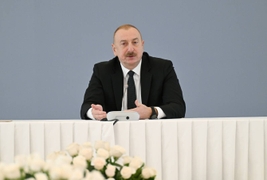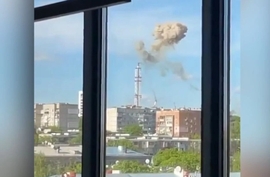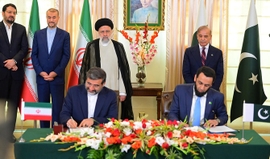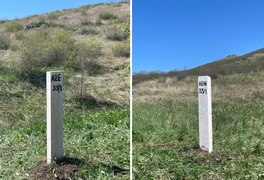The Western Azerbaijan Community (WAC), an umbrella organization dedicated to protecting the rights of displaced Azerbaijanis, adopted on Thursday a concept to establish a legal framework to facilitate the return of deportees to their historical homeland.
The document dubbed “the Concept on Ensuring Peaceful, Safe and Dignified Return of Azerbaijanis Expelled from nowadays Armenia,” or the “Concept of Return”, defines the general framework for the objectives, principles, preparatory, and implementation measures to be taken by the Community for the return of Azerbaijanis. The concept is based on international law, relevant domestic law, and historical facts, and serves to establish justice and peace, according to the WAC’s statement.
“The ethnic cleansing committed against Azerbaijanis was carried out through violence, genocide, mass murder and other crimes against humanity and gross violation of human rights guided by the systematic activity of state authorities. This process was particularly violent and brutal in 1905-1906, 1918-1921, 1948-1953, and 1987-1991,” the document reads, describing the deportation of Azerbaijanis.
“The consequences of these acts, as well as the actions committed by the institutions called 'Republic of Armenia' and 'Republic of Mountainous Armenia' in 1918-1921, in particular by the Soviet Union’s notorious leader Joseph Stalin, who signed a racist decision to concede many regions dominated by Azerbaijanis, including Zangezur, to Armenia and to deport a hundred thousand Azerbaijanis from Armenia, and by the Armenian SSR in 1987-1991, are still in place.”
The main points of the Concept are as follows:
- All Azerbaijanis expelled from modern-day Armenia and their descendants have the right to return to their homeland. They must be enabled to return in safety and dignity. The returnees’ individual and collective rights must be guaranteed.
- The return process shall occur within the international legal framework with proper guarantee and verification mechanisms.
- To ensure security of the returnees, an international peace mission with appropriate mandate must be deployed in the areas of repatriation. The mission shall consist of forces of countries trusted by the Community.
- The repatriation process shall restore pre-deportation settlement configuration and geography. Dispersing the returnees will be rejected as an attempt violating human rights.
- Within the framework of international supervision and monitoring mechanism, Armenia should engage in constructive dialogue with the Community on ensuring the individual and collective rights of Azerbaijanis to be repatriated.
- Taking into the special bond between Azerbaijani returnees and Azerbaijan, they should be enabled to have unimpeded communication with the Republic of Azerbaijan.
- The Government of Armenia shall restore the property rights of Azerbaijanis to be repatriated, ensure their re-possession of their homes and communal lands.
- Western Azerbaijanis are ready to reconcile and live with the Armenian people side by side and in peace.
- The government of Armenia has to make efforts to facilitate reconciliation, restore the destroyed Azerbaijani cultural heritage, protect it, reverse all the toponym changes it has conducted, and put an end to its discriminatory policy against Azerbaijanis.
- The Western Azerbaijan Community shall participate as the legitimate representative of Western Azerbaijanis and as the interested party in all relevant processes during and after the repatriation.
The WAC said the injustice committed against Western Azerbaijanis during the past two centuries was unacceptable and rejected the related consequences. Based on the right of return established in the Universal Declaration of Human Rights, the International Covenant on Civil and Political Rights, the 1951 Refugee Convention, and other important international acts, the Community assumed the responsibility to create conditions for the return of Azerbaijanis expelled from the territory of modern-day Armenia to their homeland and ensure their individual and collective rights after resettlement.
On the same day, the WAC addressed a request to Armenia demanding a start of a constructive dialogue with the community within the framework of the international control and monitoring mechanism to ensure the individual and collective rights of Azerbaijanis.
The Community called on the Armenian government to restore the property rights of the repatriated Azerbaijanis, and return their homes and communal lands.
Western Azerbaijan
The historical lands of Azerbaijan on the country’s western edge were originally settled by ethnic Azerbaijanis before they were included in destructive plans developed by the Russian imperial and Soviet authorities. The city of Iravan (modern-day Yerevan) and the Zangazur region was one of the cradles of the Azerbaijani population and culture before their forcible separation from the Azerbaijan Democratic Republic (ADR) in 1918 and 1920, respectively.
Iravan had been initially settled by ethnic Azerbaijanis after its establishment by their ancestors. Although Iravan was handed over “willingly” to the newly established Armenian state by the ADR government, historical sources claim it to be organized and implemented forcibly under the pressure of foreign forces.
Zangazur is a historically Azerbaijani region that forms the southern part of modern-day Armenia and a portion of the territory of Azerbaijan.
The Zangazur region, inhabited by the Turkic tribes, was a part of the Seljuk empire during its 150-year-long rule in the 11th and 12th centuries, which further expanded the Turkic-Islamic influence within the region. Starting from the 13th century, Zangazur was invaded by Mongol-Tatar tribes and the Timurid Empire. From the 15th century to the 18th century, the region was a part of the medieval Azerbaijani states of Garagoyunlu, Aghgoyunlu, and Safavids.
Demographic changes in the city of Iravan and the Zangazur region took place during the reign of Tsarist Russia and the Soviet Union. A massive relocation of Armenians by the Russian Empire to Iravan, Zangazur, and other territories of Azerbaijan started in the wake of the Russian Empire’s victory over Iran in two wars in the 1804-1812 and 1826-1828 war.
A special commission was established to deal with the deployment of Armenians from Ottoman and Iranian territories to the South Caucasus. Following the relocation, the number of Armenians in the Karabakh region of Azerbaijan reached 18,000 between 1828 and 1829 and increased to 34,606 by 1843. The next wave of deployment of Armenians into the South Caucasus by Russia lasted from 1904 to 1915, when over 260,000 ethnic Armenians were placed in the territories of Azerbaijan. Despite protests, around 130,000 Armenians were relocated to the Azerbaijani provinces of Iravan and Yelizavetpol (the name of Azerbaijan’s Ganja city during Tsarist Russia's period).
As a result of the massacres committed by Armenian armed groups in 1905-1907 and 1914-1921 in Zangazur, about half a million indigenous Azerbaijanis and other Muslim locals were killed. In those years, 115 Muslim villages in Zangazur have been wiped off the face of the earth.
Iravan was ceded to the newly-established Armenian republic on May 29, 1918. Shortly after the Bolshevik forces subjugated the Azerbaijan Democratic Republic on April 28, 1920, a significant part of the Zangazur region was also ceded to the newly-established Armenian Soviet Socialist Republic on November 30, 1920. The annexation of the territories by Armenia took place under the aegis of the Soviet empire, which forced the Azerbaijani authorities to make territorial concessions to Armenians. As a result, Nakhchivan became an exclave separated from the Azerbaijani mainland.
The annexation of Iravan took its toll on its indigenous Azerbaijani population and the cultural heritage of Azerbaijanis. According to 1916 data, there were over 373,000 Azerbaijanis living in Iravan, however, only 12,000 Azerbaijanis were registered in census files in 1922.
In 1933, the territory of the Armenian SSR was divided into districts and the name Zangazur was changed to new district names such as Gafan, Gorus, Garakilsa (Sisian), and Mehri.
The final round of the “Armenianization” of Western Azerbaijan took place in 1988 when over 300,000 ethnic Azerbaijanis living in the historical Western Azerbaijan region, or modern-day Armenia, were expelled forcibly from their ancestral lands. The anti-Azerbaijan sentiments in Armenia were then on the rise accompanied by pogroms and persecution of ethnic Azerbaijanis. The motives for the ethnic conflict were Armenia’s illegal claims for the territories of Azerbaijan, namely the Karabakh region. The deportation of Azerbaijanis later set grounds for Armenia to launch a full-scale military attack on Azerbaijan, leading to the first Karabakh war in 1991-1994 and the occupation of the internationally recognized Azerbaijani lands.


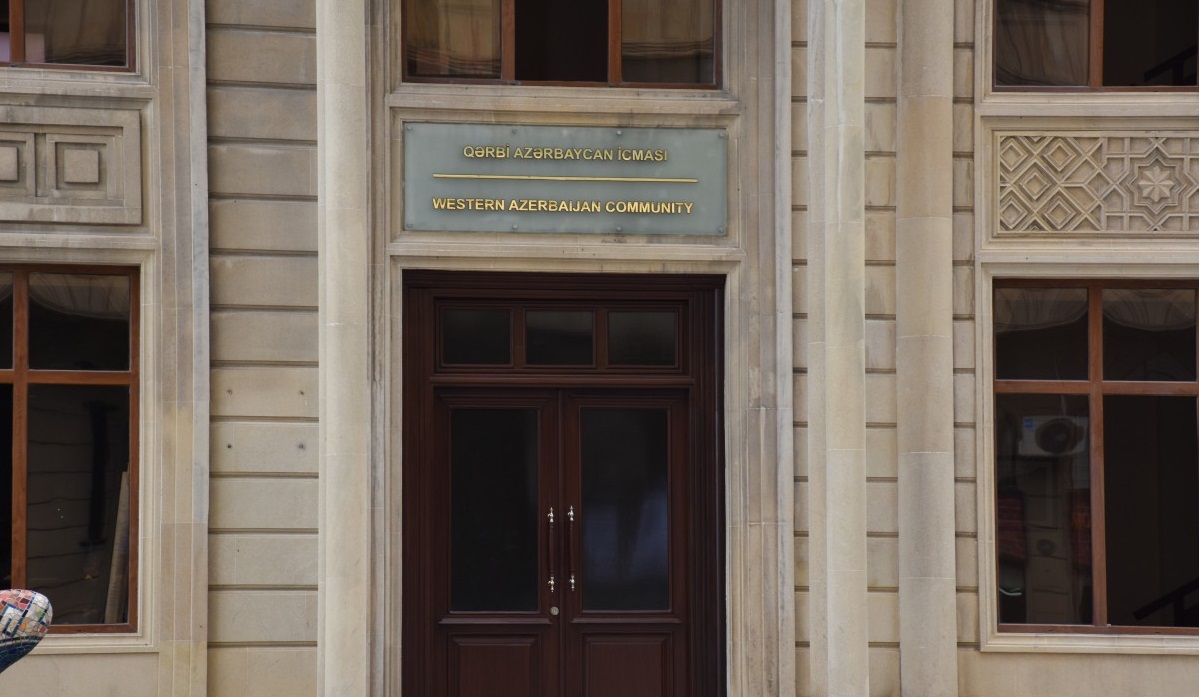




 Armenian sappers commenced on Monday mine-clearance operations in the territories adjacent to the Saint Mary Church in village of Voskepar (Armenia...
Armenian sappers commenced on Monday mine-clearance operations in the territories adjacent to the Saint Mary Church in village of Voskepar (Armenia...
 Iran and Pakistan have signed eight cooperation documents in various fields, and agreed to strengthen ties to fight terrorism in the region.
Iran and Pakistan have signed eight cooperation documents in various fields, and agreed to strengthen ties to fight terrorism in the region.
 President Aliyev emphasized the critical role of the North-South Transport Corridor in fostering transport cooperation between Azerbaijan and Russi...
President Aliyev emphasized the critical role of the North-South Transport Corridor in fostering transport cooperation between Azerbaijan and Russi...
